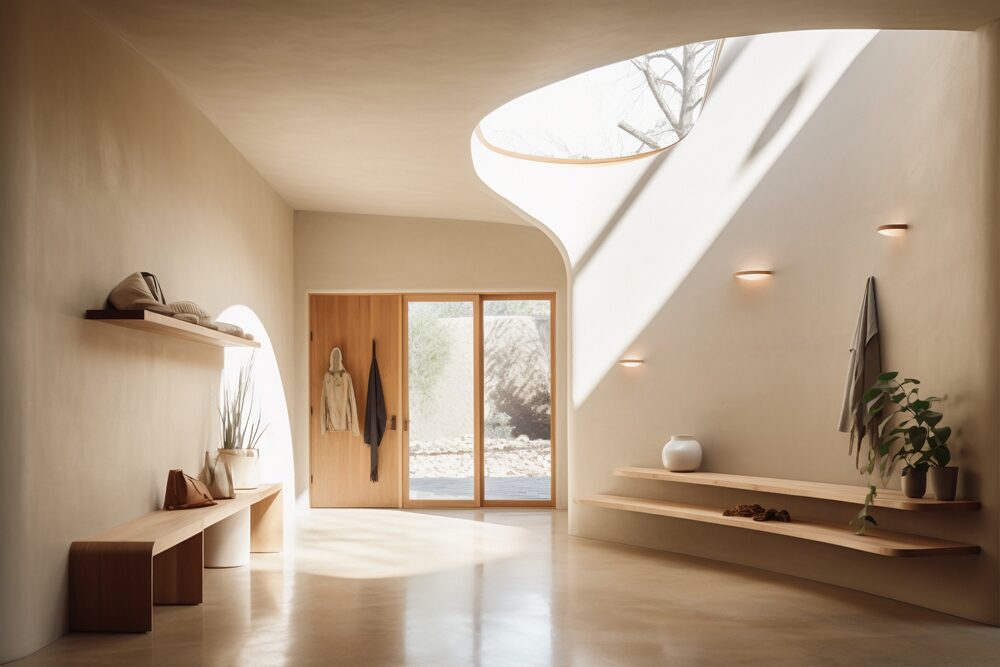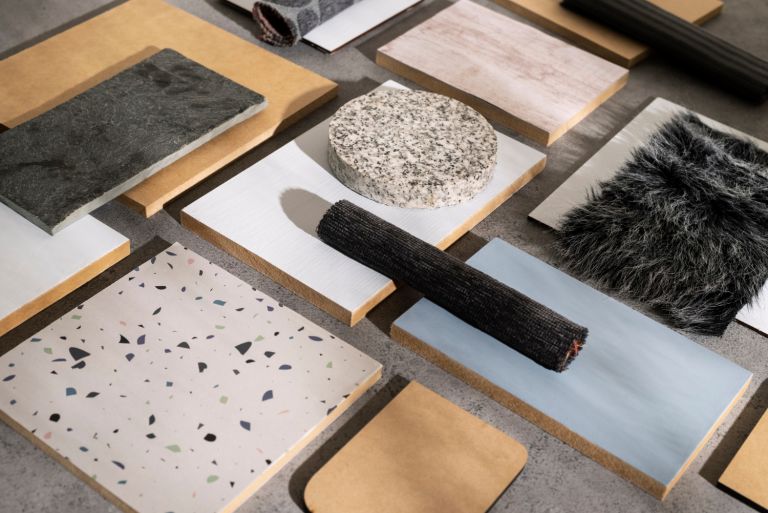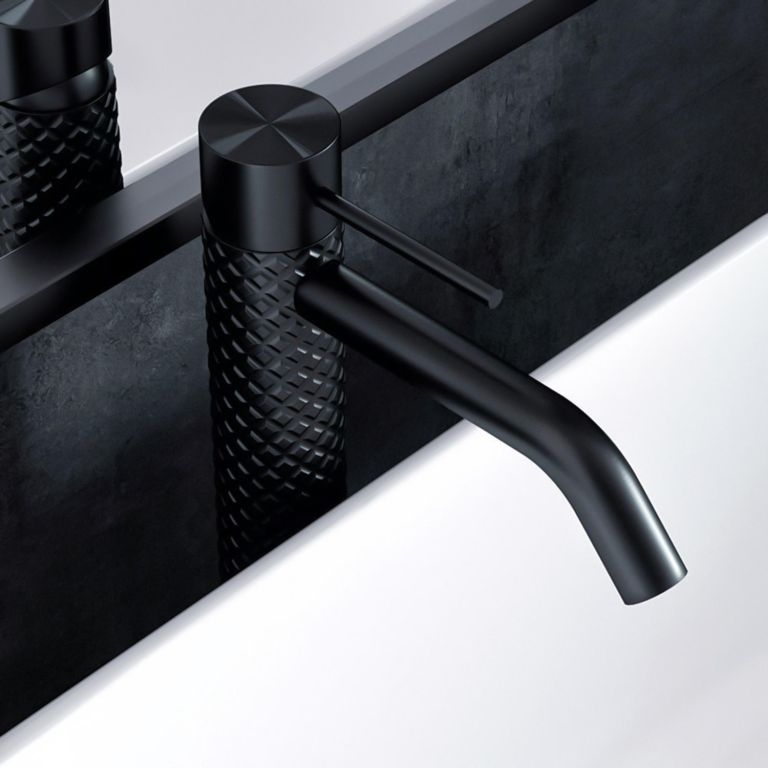Standing in the entry of a $4.2 million Atherton home I designed last year, you’d never guess this family of five with two teenagers could live so beautifully with so little visible clutter.
A single piece of statement art hangs on the wall. A floating walnut console holds nothing but a ceramic bowl and small succulent. The floors are pristine white oak with almost mirror-like clarity. Yet somehow, this space feels warm, welcoming, and completely functional for a busy family’s daily life.
The secret? Every item in their home earns its place through both beauty and function, while sophisticated hidden storage systems handle the necessities of modern life. This is luxury minimalism – not the stark, cold minimalism of design magazines, but a warm, livable approach that uses premium materials and thoughtful design to create serene environments without sacrificing comfort or functionality.
The trend toward luxury minimalism has exploded across the Bay Area, driven by our tech culture’s appreciation for elegant simplicity, rising home prices that make every square foot precious, and a collective desire for peaceful spaces that counteract our high-stress lifestyles.
After designing over 150 luxury minimalist interiors across the Bay Area, I’ve learned that successful minimalism isn’t about owning less – it’s about choosing better and creating systems that make daily life effortless while surrounding yourself with objects and materials that bring genuine joy.
The homes that get this right feel like serene retreats that happen to contain everything needed for modern living, seamlessly hidden or beautifully integrated into the overall design aesthetic.
Let me show you exactly how to create luxury minimalist spaces that feel warm, functional, and sophisticatedly simple – never stark or cold.
Understanding the Principles of Luxury Minimalism
Luxury minimalism differs fundamentally from basic minimalism by emphasizing quality, craftsmanship, and thoughtful curation rather than simply removing objects from spaces.
The philosophy centers on the Japanese concept of “mono no aware” – finding beauty in carefully selected, high-quality items while eliminating visual noise that distracts from their appreciation.
Core Design Philosophy
Intentional curation over arbitrary reduction:
Every item in a luxury minimalist space serves a purpose, whether functional, aesthetic, or emotional. The goal isn’t to own fewer things, but to surround yourself only with items that actively improve your life or bring genuine pleasure.
Quality investment strategy:
- Fewer, better pieces: One exceptional sofa rather than multiple adequate pieces
- Timeless over trendy: Classic designs that won’t feel dated in five years
- Craftsmanship focus: Handmade and artisanal items that age beautifully
- Material authenticity: Real wood, stone, and metal rather than synthetic alternatives
Spatial harmony and proportion:
- Breathing room: Adequate space around furniture for visual rest
- Scale relationships: Furniture proportions that feel balanced in their spaces
- Sight line management: Clear visual paths that create sense of spaciousness
- Focal point clarity: Single statement pieces rather than competing elements
The Psychology of Minimalist Luxury
Stress reduction through visual calm:
Research shows that cluttered environments increase cortisol production and reduce cognitive performance. Luxury minimalism creates psychological benefits that justify the investment:
Mental clarity: Reduced visual distractions improve focus and decision-making
Emotional calm: Serene environments lower stress and improve mood
Enhanced appreciation: Fewer objects means greater attention to their beauty and quality
Simplified maintenance: Less stuff means easier cleaning and organization
Status signaling through restraint:
In the Bay Area’s achievement-oriented culture, luxury minimalism signals sophistication and confidence – the ability to afford quality over quantity and the wisdom to choose thoughtfully rather than acquisitively.
Distinguishing Luxury Minimalism from Stark Minimalism
Warmth through material richness:
Cold minimalism uses white walls, steel, and glass exclusively. Luxury minimalism incorporates warm materials like rich wood, natural stone, and soft textiles that create inviting rather than institutional environments.
Comfort without compromise:
- Functional seating: Beautiful furniture that’s actually comfortable for daily use
- Adequate lighting: Multiple light sources for both task and ambient needs
- Climate comfort: Proper heating, cooling, and ventilation hidden from view
- Storage adequacy: Sufficient storage to maintain the minimalist aesthetic
Personal expression within constraints:
- Art selection: Carefully chosen pieces that reflect personality
- Color integration: Sophisticated color palettes that aren’t exclusively neutral
- Texture variation: Multiple textures that add visual and tactile interest
- Cultural elements: Items that reflect heritage and personal history
Essential Material Choices for Luxury Minimalism
Material selection drives the success of luxury minimalist design – each surface, texture, and finish must work harder to create visual interest and tactile pleasure since there are fewer decorative elements to rely on.
Premium Stone Applications
Natural stone provides the foundation for luxury minimalist design through its inherent beauty, durability, and connection to natural elements.
Marble integration strategies:
Calacatta and Carrara marble applications:
- Kitchen islands: Book-matched slabs that create dramatic veining patterns
- Bathroom vanities: Continuous marble surfaces that eliminate visual breaks
- Accent walls: Feature walls that provide luxurious focal points
- Flooring: Large-format tiles with minimal grout lines
Installation considerations:
- Slab continuity: Matching grain patterns across surfaces
- Edge details: Refined edge profiles that enhance material beauty
- Surface finishes: Polished, honed, and leathered finishes for different applications
- Maintenance systems: Proper sealing and care protocols
Cost range: $60-200 per square foot installed depending on selection and application
Alternative luxury stones:
Quartzite options:
- Taj Mahal: Soft white with subtle veining, more durable than marble
- White Ice: Pure white with crystal-like inclusions
- Super White: Minimal veining for ultra-clean aesthetic
Granite alternatives:
- Absolute Black: Mirror-like finish for dramatic contrast
- White Ice: Translucent qualities when backlit
- Exotic granites: Unique patterns for statement applications
Wood Selection and Application
Wood brings essential warmth to luxury minimalist spaces while providing opportunities for craftsmanship display and natural beauty appreciation.
Premium wood species for Bay Area projects:
White oak applications:
- Flooring: Wide-plank floors with natural oil finishes
- Cabinetry: Rift-sawn grain patterns for consistent appearance
- Architectural elements: Ceiling beams and wall paneling
- Furniture: Custom built-ins and statement pieces
Benefits: Consistent grain, excellent durability, ages beautifully, sustainable sourcing available
Walnut integration:
- Accent elements: Floating shelves and statement furniture
- Kitchen islands: Rich chocolate tones for visual warmth
- Bedroom furniture: Headboards and nightstand integration
- Art display: Custom frames and display systems
Reclaimed and specialty woods:
- Reclaimed teak: Marine-grade durability with unique character
- Live-edge slabs: Natural wood edges for organic elements
- Figured woods: Burl and flame patterns for artistic applications
Finish selection for minimalist aesthetic:
- Natural oil finishes: Enhance wood grain while providing protection
- Matte polyurethane: Durability without shine
- Lime wash treatments: Subtle color while maintaining wood texture
- Wire-brushed textures: Enhanced grain definition and tactile interest
Sophisticated Color Palettes
Luxury minimalism relies on sophisticated neutral palettes punctuated by carefully selected accent colors that create depth without visual chaos.
Foundation neutrals:
Warm whites and creams:
- Benjamin Moore Cloud White: Clean but warm undertones
- Farrow & Ball Pointing: Subtle yellow undertones for warmth
- Custom mixed whites: Unique tones that complement natural materials
Sophisticated grays:
- Warm gray families: Gray with beige or brown undertones
- Cool grays: Blue or green undertones for contemporary feel
- Charcoal accents: Deep grays for contrast and grounding
Natural tones:
- Stone colors: Taupes and mushrooms that complement natural materials
- Earth tones: Subtle browns and ochres for warmth
- Sage greens: Connection to nature without strong color commitment
Accent color strategies:
- Single color focus: One accent color used sparingly throughout
- Monochromatic variations: Different shades of the same color family
- Natural accents: Colors drawn from wood grain, stone patterns, or garden views
Hidden Storage and Integrated Systems
The success of luxury minimalism depends on sophisticated storage systems that handle daily necessities while maintaining clean visual lines.
Integrated cabinetry solutions:
Floor-to-ceiling systems:
- Flush-mount hardware: Handle-free designs with push-open mechanisms
- Consistent materials: Matching wood or painted finishes throughout
- Varied functions: Entertainment, office, dining, and general storage
- Lighting integration: LED strips that illuminate contents without visible fixtures
Kitchen storage innovations:
- Full-extension drawers: Everything accessible without reaching
- Vertical dividers: Dish and tray storage that maintains organization
- Appliance garages: Hidden storage for small appliances
- Integrated pantries: Floor-to-ceiling food storage with organizational systems
Bedroom and closet systems:
- Built-in wardrobes: Custom closets that maximize space efficiency
- Hidden laundry: Concealed washer/dryer units
- Under-bed storage: Platform beds with integrated storage compartments
- Nightstand integration: Built-in charging stations and storage
Technology integration:
- Concealed wiring: All cables and connections hidden from view
- Integrated audio: Invisible speakers throughout the home
- Smart home hubs: Centralized control systems hidden in utility areas
- Charging stations: Built-in USB and wireless charging throughout
Creating Warmth in Minimalist Spaces
The challenge of luxury minimalism is maintaining the clean aesthetic while creating spaces that feel welcoming, comfortable, and lived-in rather than cold or sterile.
Layered Texture Strategies
With fewer decorative objects, texture becomes crucial for creating visual and tactile interest that prevents minimalist spaces from feeling flat or cold.
Natural texture integration:
Textile layering:
- Area rugs: Natural fiber rugs that define spaces and add warmth
- Throw pillows: Varying textures in neutral tones
- Window treatments: Linen and wool fabrics for softness
- Upholstery: Bouclé, mohair, and other tactile fabrics
Material texture variation:
- Wall treatments: Lime plaster, natural stone, and wood paneling
- Ceiling elements: Exposed beams, coffered details, and texture paints
- Flooring contrasts: Combining smooth stone with textured wood
- Hardware finishes: Matte, brushed, and oxidized metal finishes
Organic elements:
- Live plants: Sculptural plants that add life and air purification
- Natural arrangements: Branches, stones, and seasonal elements
- Water features: Small fountains or reflection pools
- Fire elements: Fireplaces and fire bowls for warmth and gathering
Lighting Design for Minimalist Luxury
Lighting in minimalist spaces must work harder to create ambiance and visual interest since there are fewer decorative elements to provide visual variety.
Layered lighting approach:
Ambient lighting:
- Recessed LED systems: Clean ceiling integration with dimming control
- Cove lighting: Hidden LED strips that wash walls with soft light
- Natural light maximization: Large windows and skylights
- Fireplace integration: Wood-burning or gas fires for warm ambient light
Task lighting:
- Under-cabinet systems: Hidden LED strips for kitchen and office work
- Reading lights: Integrated or carefully selected fixtures for specific activities
- Art lighting: Picture lights and track systems for artwork display
- Mirror lighting: Vanity and grooming areas with shadow-free illumination
Accent lighting:
- Landscape integration: Outdoor lighting visible through large windows
- Sculpture lighting: Highlighting special objects or architectural features
- Water feature lighting: Illuminated water elements for evening ambiance
- Seasonal lighting: Flexible systems for holiday and event lighting
Smart lighting control:
- Scene programming: Pre-set lighting levels for different activities
- Circadian rhythm support: Color temperature adjustment throughout the day
- Occupancy sensing: Automatic lighting that responds to presence
- Integration systems: Coordination with security, entertainment, and climate control
Furniture Selection and Arrangement
In minimalist spaces, every piece of furniture must justify its presence through both function and beauty, making selection and placement crucial for success.
Quality over quantity principles:
Investment furniture selection:
- Statement seating: Exceptional sofas and chairs that serve as room focal points
- Dining integration: Tables and chairs that work for both daily use and entertaining
- Storage furniture: Beautiful pieces that provide function without looking utilitarian
- Custom built-ins: Furniture-quality millwork that maximizes space efficiency
Spatial arrangement strategies:
- Conversation groupings: Furniture arrangements that encourage interaction
- Traffic flow: Clear pathways that feel generous rather than cramped
- View optimization: Furniture placement that takes advantage of outdoor views
- Proportion relationships: Furniture scaled appropriately for room dimensions
Multi-functional design:
- Dual-purpose pieces: Ottomans with storage, dining tables that extend
- Flexible arrangements: Furniture that can be reconfigured for different uses
- Seasonal adaptability: Pieces that work year-round but can be supplemented
- Technology integration: Furniture with built-in charging and cable management
Bay Area Applications and Case Studies
Luxury minimalism takes on unique characteristics in Bay Area homes due to our indoor-outdoor lifestyle, tech culture influence, and high property values that make space efficiency crucial.
Tech Executive Retreat: Palo Alto Minimalist Renovation
Project overview: Complete renovation of 1960s ranch home for tech executive family seeking calm, sophisticated living environment
Design challenges:
- Original layout: Compartmentalized rooms that felt cramped and dated
- Family functionality: Need for both formal entertaining and casual family living
- Technology integration: Extensive smart home systems without visible complexity
- Outdoor connection: Taking advantage of large lot and garden views
Minimalist solutions implemented:
Spatial transformation:
- Wall removal: Opening kitchen, living, and dining into single flowing space
- Ceiling height: Raising ceilings to 11 feet for enhanced spaciousness
- Window expansion: Installing floor-to-ceiling windows for garden connection
- Sight line optimization: Clear views through entire public space
Material palette:
- Flooring: Wide-plank white oak throughout with invisible transitions
- Walls: Custom-mixed warm white paint with lime plaster accent wall
- Kitchen: Calacatta marble waterfall island with walnut cabinetry
- Bathrooms: Book-matched marble with integrated LED lighting
Storage integration:
- Living area: Floor-to-ceiling walnut cabinetry hiding entertainment systems
- Kitchen: Handle-free cabinets with full-extension drawers throughout
- Master suite: Walk-in closet with custom organizational systems
- Office: Built-in desk with integrated technology and hidden cable management
Results after completion:
- Space perception: Home feels 40% larger despite same square footage
- Functionality: Family reports easier daily routines and enhanced entertaining
- Technology satisfaction: Smart home systems work invisibly without complexity
- Property value: 25% increase over neighborhood comparable homes
San Francisco Condo: Urban Minimalist Luxury
Project overview: 1,400 sq ft luxury condo renovation focusing on maximizing space and light in urban environment
Design constraints:
- Limited square footage: Every element must maximize spatial efficiency
- Urban privacy: Need for sophisticated window treatments and sound control
- Entertaining requirements: Space for dinner parties up to 12 people
- Storage challenges: No basement or garage for seasonal item storage
Minimalist strategies:
Space multiplication techniques:
- Mirrors: Strategic placement to double apparent space
- Glass partitions: Separation without visual barriers
- Consistent flooring: Large-format tiles throughout for visual continuity
- Vertical emphasis: Floor-to-ceiling elements that draw eye upward
Urban comfort solutions:
- Sound management: Acoustic panels integrated into design elements
- Privacy systems: Motorized shades with varying opacity levels
- Air quality: High-performance filtration integrated into HVAC
- Lighting control: Circadian rhythm lighting to compensate for limited natural light
Flexible functionality:
- Expandable dining: Table that seats 4 daily, extends to 12 for entertaining
- Hidden guest room: Murphy bed system in office/guest room
- Seasonal storage: Under-bed and overhead storage systems
- Work-from-home: Integrated office space that disappears when not in use
Los Altos Hills: Minimalist Family Compound
Project overview: New construction family home emphasizing indoor-outdoor living and multi-generational functionality
Luxury minimalism at scale:
Architectural integration:
- Material continuity: Same stone and wood materials inside and outside
- Spatial flow: Seamless transitions between indoor and outdoor living areas
- Natural light: Clerestory windows and skylights throughout
- View optimization: Every room designed around mountain and valley views
Family functionality within minimalist aesthetic:
- Mudroom systems: Extensive storage for sports equipment and school items
- Kitchen efficiency: Commercial-grade appliances integrated seamlessly
- Teen spaces: Dedicated areas that can be messy without affecting main spaces
- Guest accommodation: Separate wing for visiting family members
Outdoor integration:
- Pool area: Minimalist lap pool with automatic cover system
- Garden design: Drought-tolerant landscape with architectural plant selection
- Fire features: Modern fire pit and outdoor fireplace for gathering
- Dining areas: Multiple outdoor dining options for different group sizes
Cost Analysis and Investment Strategy
Luxury minimalism requires higher upfront investment in materials and craftsmanship, but provides superior longevity and property value returns.
Investment Levels and Expected Outcomes
Entry-level luxury minimalism: $75,000-$150,000
- Scope: Single room renovation with premium materials
- Materials: Natural stone, quality wood, integrated storage
- Results: Dramatic improvement in space function and aesthetic appeal
Comprehensive minimalist renovation: $200,000-$500,000
- Scope: Whole-home renovation with architectural modifications
- Materials: Premium stones, custom millwork, integrated technology
- Results: Complete lifestyle transformation and significant property value increase
New construction luxury minimalism: $500,000-$1,200,000
- Scope: Complete home design from foundation to finish
- Materials: Highest quality materials throughout, custom everything
- Results: Unique property with exceptional market appeal and lasting value
Return on Investment Analysis
Property value enhancement:
- Immediate value: 15-25% increase in appraised value upon completion
- Market appeal: 40% faster sales due to sophisticated aesthetic
- Buyer demographic: Appeals to high-income professionals and empty nesters
- Timeless appeal: Design approach that won’t feel dated in 10+ years
Lifestyle value benefits:
- Maintenance reduction: High-quality materials require less frequent replacement
- Energy efficiency: Better insulation and systems reduce operating costs
- Stress reduction: Organized, beautiful spaces improve daily quality of life
- Entertainment value: Enhanced ability to host family and business events
Long-term cost benefits:
- Material longevity: Premium materials last 20-30 years vs. 5-10 for standard options
- Timeless design: No need for style updates or trend-chasing renovations
- Quality systems: Better HVAC, electrical, and plumbing reduce maintenance costs
- Integrated storage: Organizational systems that maintain effectiveness over time
Implementation Strategy and Professional Selection
Achieving luxury minimalism requires coordination between architects, interior designers, and craftspeople who understand the philosophy and execution requirements.
Design Team Assembly
Essential professional roles:
Architect or design-build firm:
- Spatial planning: Understanding how to create generous feeling in minimal spaces
- Material expertise: Knowledge of premium materials and installation requirements
- Integration skills: Ability to coordinate all building systems seamlessly
Interior designer:
- Curation expertise: Understanding what to include and what to eliminate
- Material coordination: Ensuring all finishes work together harmoniously
- Lifestyle planning: Creating functional systems that support daily routines
Custom millwork specialist:
- Storage design: Creating integrated storage that doesn’t look like storage
- Craftsmanship quality: Precision work that meets luxury standards
- Material expertise: Understanding how different woods and finishes age and perform
Project Planning and Execution
Timeline considerations:
- Design phase: 3-6 months for comprehensive planning and material selection
- Custom fabrication: 8-16 weeks lead time for millwork and stone fabrication
- Construction phase: 6-12 months depending on scope and complexity
- Styling and completion: 4-8 weeks for final furnishing and system setup
Quality control priorities:
- Material inspection: Verifying quality before installation
- Installation oversight: Ensuring craftsmanship meets luxury standards
- System testing: Confirming all integrated systems function properly
- Final detailing: Attention to every visible detail and finish
Final Results
Luxury minimalism creates Bay Area homes that feel serene, sophisticated, and effortlessly functional while reflecting our region’s appreciation for quality, innovation, and connection to natural beauty.
Successful luxury minimalist projects typically achieve:
- 30-50% improvement in spatial efficiency and organization
- 25-40% reduction in daily maintenance and cleaning time
- Enhanced entertaining capability through flexible, sophisticated spaces
- 15-25% increase in property value through premium materials and design
- Improved family harmony through reduced clutter and enhanced functionality
- Timeless aesthetic appeal that maintains relevance for decades
The key to success is understanding that luxury minimalism isn’t about deprivation – it’s about choosing thoughtfully and investing in quality that provides lasting beauty and superior functionality.
Conclusion
Luxury minimalism represents the evolution of minimalist design from stark reduction to sophisticated curation, emphasizing quality, craftsmanship, and thoughtful selection over simple elimination of objects.
In the Bay Area’s high-stress, high-achievement environment, luxury minimalist homes provide essential refuge and renewal while reflecting our cultural values of innovation, quality, and environmental consciousness.
The most successful projects feel effortless and serene while accommodating the full complexity of modern family life through intelligent design and superior materials.
For Bay Area homeowners seeking spaces that support both productivity and relaxation, luxury minimalism offers a proven approach to creating homes that feel sophisticated, comfortable, and authentically personal.
The investment in luxury minimalist design pays dividends through enhanced daily life quality, reduced maintenance demands, and superior property value retention in our competitive real estate market.






